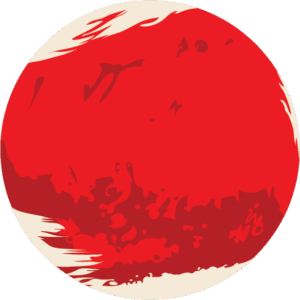The Downlink • May 27, 2022
It’s not easy being this far out
Space Snapshot

After three and a half years on Mars, NASA’s InSight lander is nearing the end of its operations. Martian dust has coated the spacecraft’s two solar panels to the point that they will soon not be able to generate enough power to run InSight’s instruments. You can see just how much Martian dust has accumulated in this comparison of a photo taken in December 2018 (left) and another taken in June 2021 (right). NASA expects that InSight’s operations will end in July unless strong winds blow enough dust off the solar panels. Image credit: NASA/JPL-Caltech.
You love space, now take action
This weekly newsletter is your toolkit to learn more about space, share information with your friends and family, and take direct action to support exploration. Anyone can subscribe at planetary.org/connect to receive it as a weekly email.
Mission Briefings


Voyager 1 is behaving strangely, but that’s no surprise. Mission engineers are investigating mysterious signals coming from one of the spacecraft’s telemetry instruments, which appears to be sending random data. “A mystery like this is sort of par for the course at this stage of the Voyager mission,” said Suzanne Dodd, project manager for Voyager 1 and 2 at NASA’s Jet Propulsion Laboratory in Southern California. “The spacecraft are both almost 45 years old, which is far beyond what the mission planners anticipated. We’re also in interstellar space – a high-radiation environment that no spacecraft have flown in before.” Pictured: An artist’s impression of Voyager 1 in interstellar space. Image credit: NASA/JPL-Caltech.

China has announced an ambitious asteroid-sampling mission. Tianwen-2 will launch in 2025, fly to the small near-Earth asteroid Kamo'oalewa, collect samples, return them to Earth, and then continue on to study an "active asteroid," an object with properties of both asteroids and comets.

NASA is funding an innovative solar sailing mission. The Diffractive Solar Sailing project was selected for Phase III study under the NASA Innovative Advanced Concepts program. Diffractive lightsails would use small gratings embedded in thin films to take advantage of a property of light called diffraction, which causes light to spread out when it passes through a narrow opening. This would allow the spacecraft to make more efficient use of sunlight without sacrificing maneuverability. The new Phase III award will give the research team $2 million over two years to continue technology development in preparation for a potential future demonstration mission.
From The Planetary Society


The outermost planets might not get a lot of attention, but they have a lot to teach us. Uranus and Neptune are ice giants whose formation and evolution likely had a huge influence on those of the inner planets, including Earth. With a mission to Uranus recently named a top priority by the U.S. Planetary Science Decadal Survey, we’re looking forward to what we can learn about these mysterious, distant worlds. Pictured: Uranus (left) and Neptune (right) imaged by the Hubble Space Telescope in 2018. Image credit: NASA et al.

Planetary Radio’s host Mat Kaplan was honored with the Mars Horizon award at this year's Humans to Mars Summit in Washington, DC. This award recognizes his decades of work educating the public about Mars science, exploration and so much more. Watch the recordings of last week’s Humans to Mars Summit, much of which was hosted by Mat, to see for yourself just how much he deserved this award.
What's Up

In the predawn sky look for super bright Venus low to the eastern horizon. To its upper right, bright Jupiter and reddish Mars are extremely close together. Saturn keeps its distance from the rest of the planet party, shining yellowish a little higher up. Learn more at planetary.org/night-sky.
Wow of the Week

Talk about far out — this artist’s impression shows how distant planets like Uranus and Neptune are thought to form in the outer reaches of a budding star system. Young stars are typically surrounded by dense, rotating discs of gas and dust, known as protoplanetary discs, that eventually form planets. In the inner part of the disc, heat and pressure from the star keeps water molecules in a gaseous state. Farther out, water molecules start to turn into ice and collect around dust grains and other particles. This is how we get ice giants like Uranus and Neptune. Image credit: A. Angelich (NRAO/AUI/NSF)/ALMA (ESO/NAOJ/NRAO).
Special call for space art!
We are looking for artwork depicting the planet Uranus! If you’re an artist and have something on this subject that you can share with us, email it to [email protected]. Please let us know in your email if you’re a Planetary Society member!


 Explore Worlds
Explore Worlds Find Life
Find Life Defend Earth
Defend Earth


